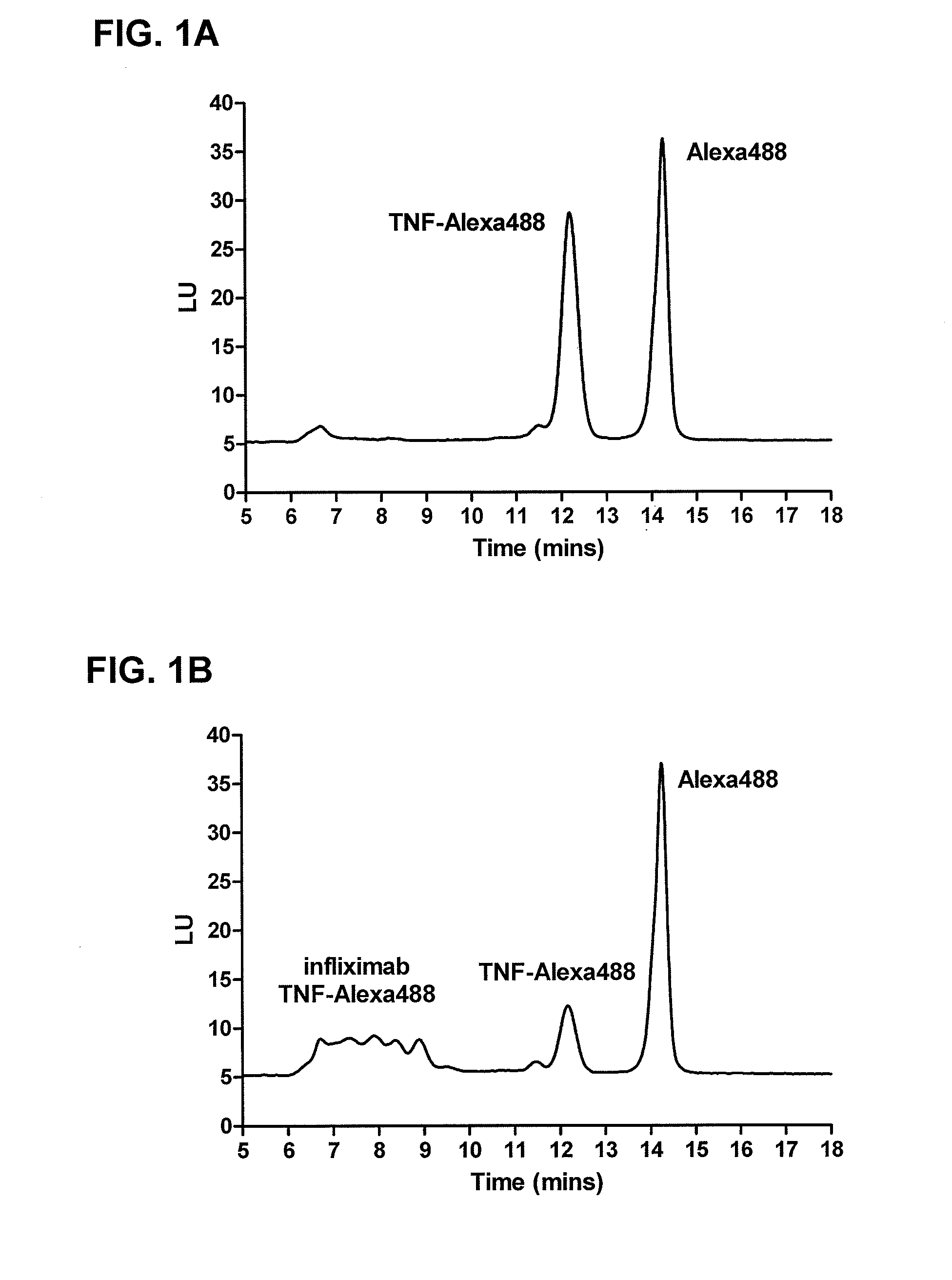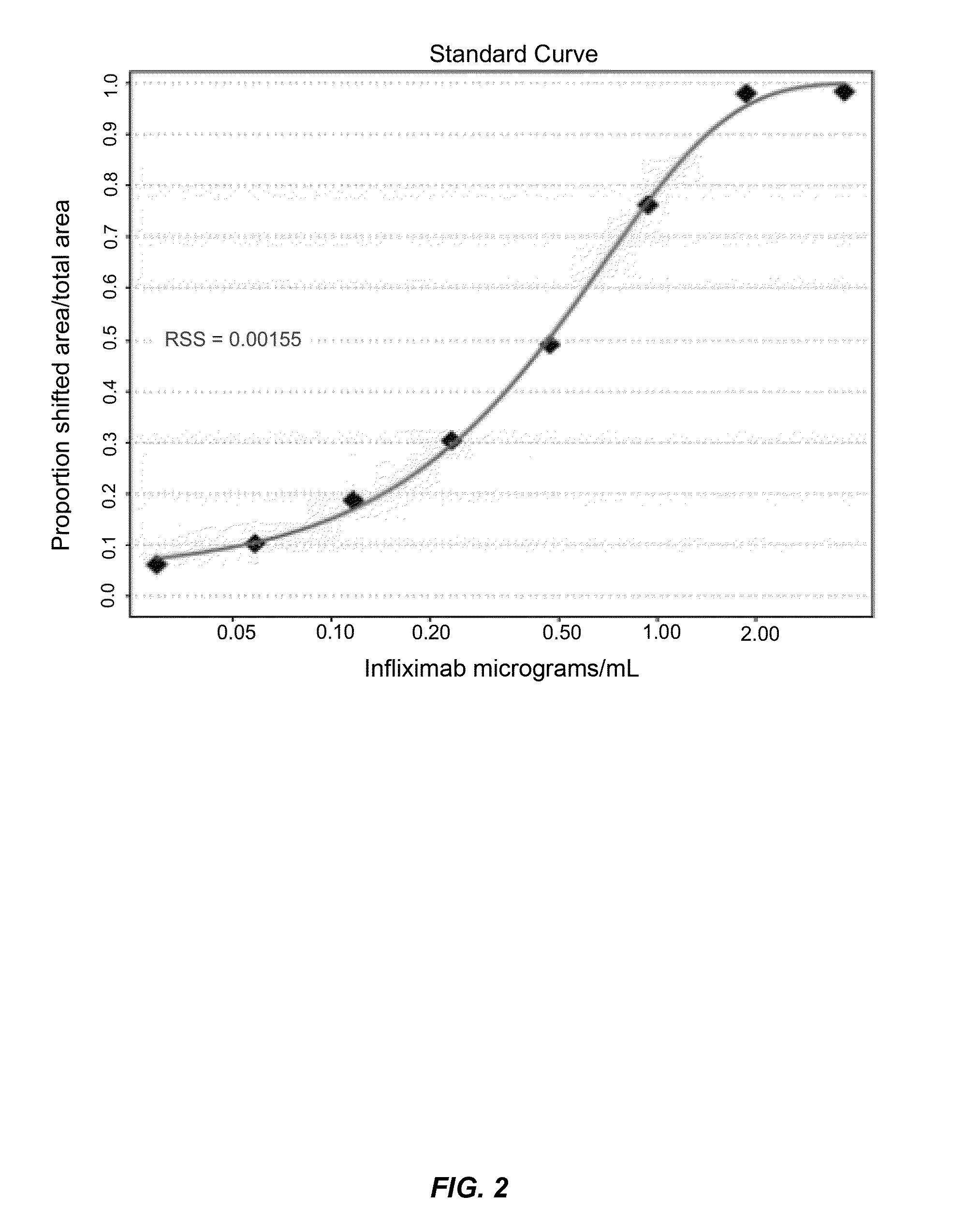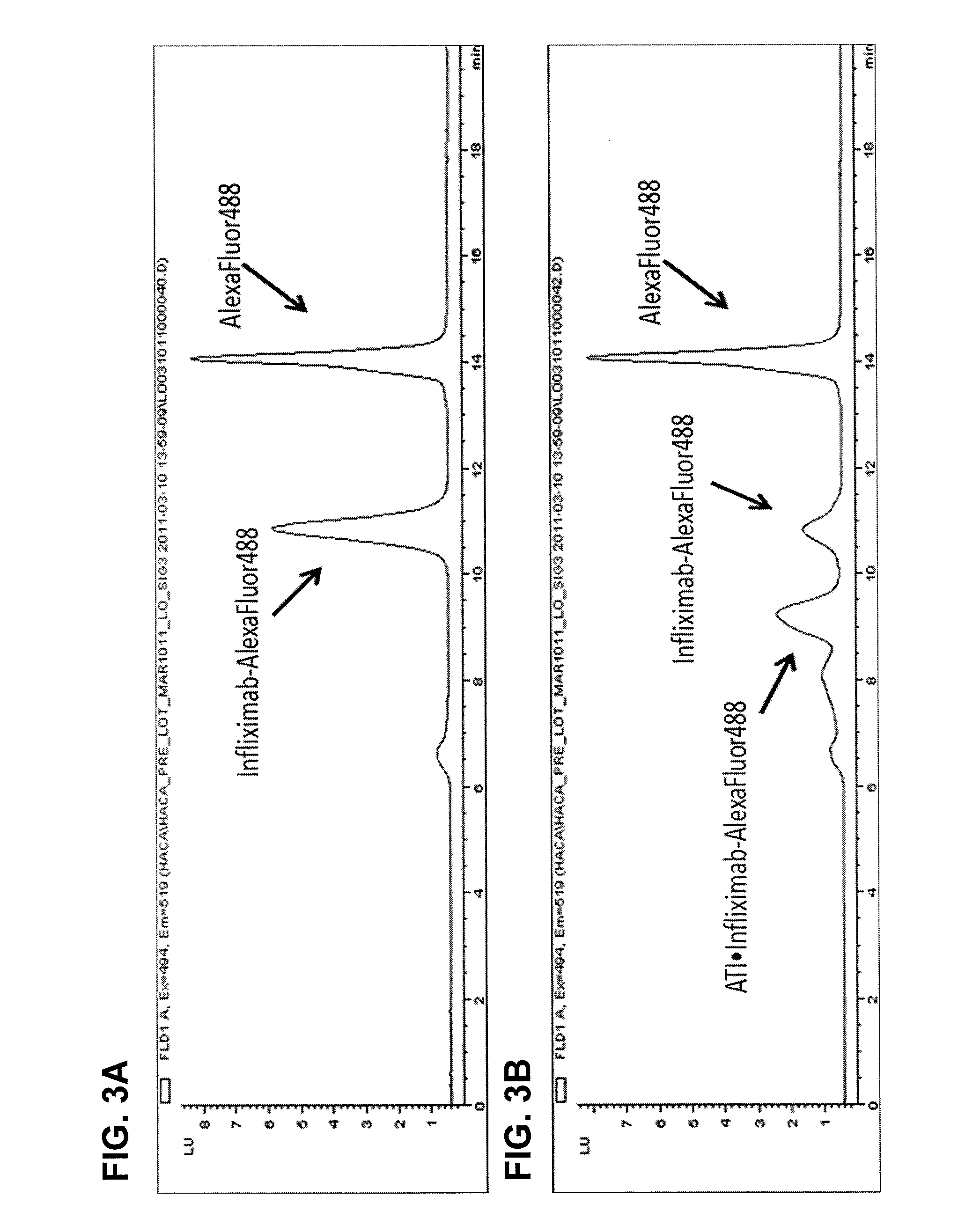Mobility shift assays for detecting Anti-tnf alpha drugs and autoantibodies
a technology of mobility shift and autoantibodies, which is applied in the field of mobility shift assays for detecting anti-tnf alpha drugs and autoantibodies, can solve the problems of increasing the toxicity of infliximab, so as to reduce the toxicity
- Summary
- Abstract
- Description
- Claims
- Application Information
AI Technical Summary
Benefits of technology
Problems solved by technology
Method used
Image
Examples
example 1
Mobility Shift Assay for Anti-TNF-α Drug Infliximab
[0153]This example illustrates one embodiment of the method described herein for determining the presence of infliximab in a sample. The assay is performed by incubating fluorescently labeled recombinant TNF-α (TNF-Alexa488) containing a deactivated Alexa488 loading control with sera containing infliximab and allowed to reach equilibrium, forming various complexes of increasing molecular weight. Complexes are formed ranging in size from approximately 200 kDa for 1:1 binding to over 2000 kDa. After injection and elution of the complex mixture through a column packed with gel media, free TNF-Alexa488 (Mw˜51 kDa) elutes at a retention time of approximately 11-12.5 minutes while infliximab-TNF-Alexa488 complexes elute at the range from 6-10 minutes, and the deactivated Alexa488 loading control elutes between 13.5-14.5 minutes. This real time, liquid phase assay resolves infliximab-TNF complexes from free TNF based on the size of the com...
example 2
Mobility Shift Assay for Autoantibodies Against Anti-TNF-α Drug Infliximab (ATI)
[0157]This example illustrates one embodiment of the method described herein for determining the total amount of autoantibody against infliximab present in a sample. The assay was performed by first acid dissociating infliximab-ATI complexes in the standards, controls and patient serum samples with 0.5 M Citric Acid pH 3.0 with an one hour incubation. Fluorescently labeled infliximab (infliximab-Alexa488) containing a deactivated Alexa488 loading control was then added in excess to compete with free infliximab in the samples. 10×PBS was used to neutralize the reactions and all reactions were incubated for one hour to achieve equilibrium, forming various complexes of increasing molecular weight. Complexes formed range in size from approximately 300 kDa for 1:1 binding to over 2000 kDa. Prior to injection, all reaction solutions were diluted to 2% serum and filtered through a 0.22 μM filter plate. After in...
example 3
Calculation of Total Amount of Autoantibody to Infliximab (Total ATI)
[0162]This example describes methods of calculating the total amount of autoantibody against infliximab in a sample from a patient.
[0163]In this illustrative example, in order to calculate the amount of total autoantibody, the following equation is used:
Total ATI=ATI bound to unlabeled IFX+ATI bound to labeled IFX
(a) Calculation of ATI Bound to Unlabeled Infliximab
[0164]Using the equilibrium equation A+B+C=AC+BC, where A=unlabeled Infliximab, B=Labeled-infliximab and C=ATI, the total amount of ATI present in the serum can be accurately calculated.
[0165]For this equation the following values are known for each sample:
[0166]A is the concentration calculated from testing with the infliximab mobility shift assay.
[0167]B is the known amount of infliximab-AlexaFluor488 spiked into the sample.
[0168]BC is the concentration calculated from the ATI mobility shift assay.
[0169]Knowing that the sample is acid dissociated and th...
PUM
 Login to View More
Login to View More Abstract
Description
Claims
Application Information
 Login to View More
Login to View More - R&D
- Intellectual Property
- Life Sciences
- Materials
- Tech Scout
- Unparalleled Data Quality
- Higher Quality Content
- 60% Fewer Hallucinations
Browse by: Latest US Patents, China's latest patents, Technical Efficacy Thesaurus, Application Domain, Technology Topic, Popular Technical Reports.
© 2025 PatSnap. All rights reserved.Legal|Privacy policy|Modern Slavery Act Transparency Statement|Sitemap|About US| Contact US: help@patsnap.com



